Eerie vision of Far North ghost towns
Places that were once filled with life have all but disappeared, leaving behind remnants of homes that are all but forgotten North of 60 Mining News – October 7, 2022
Last updated 10/10/2022 at 4:16am
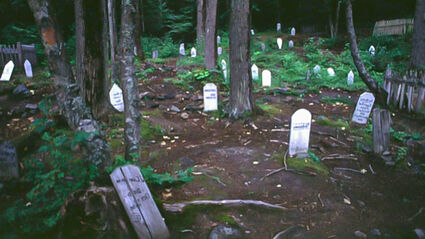
Courtesy of Alaska Trails to the Past
The 1898 Palm Sunday Avalanche claimed the lives of a reported 65 people. The number is believed to be incorrect, with estimations being much higher than bodies found. The famous Slide Cemetery in Dyea, Alaska, remains, showing proof of many of the individuals that lost their lives that day.
For this special spooky edition, North of 60 Mining News is revisiting some of the most bizarre and disturbing ghost towns in its northern coverage area.
From one of the most haunted places in Alaska to a practically unknown trading post in Nunavut, enjoy this eerie account of places that once thrived but are now all but forgotten with nary the skeleton of infrastructure to prove its existence.
Let us peer into the oftentimes short-lived bastions of civilization that, for numerous reasons, could not stand the test of time and are only a memory of a bygone life.
Alaska: Dyea
Oral history accounts indicate that at one time, Dyea was a small permanent village, and in the decades before the rush for gold that drew the first prospectors north, it was a seasonal fishing camp and staging area for trade trips between the coast and the interior. In fact, the name Dayéi means "to pack" in Tlingit.
Dyea grew from a stayover to a full-blown outpost with the establishment of its first trading post in the mid-1880s and became an important supply and information point for prospectors heading into the Yukon basin before the Klondike Gold Rush.
Once word spread, Dyea quickly reached the height of its prosperity, boasting over 150 businesses, including restaurants, hotels, supply houses, and saloons. Some of the town's new buildings were fairly large, including the Olympic Hotel, a three-story 75-by-100-foot structure that was billed as "the largest in Alaska."
The town also featured two breweries, as well as attorneys, bankers, freighting companies, photographers, steamship and real estate agents.
Yet, fate or any other powers that be would not provide prosperity for Dyea any longer. Although it kept an even pace with its neighbor Skagway, just 10 miles (16 kilometers) to the south, on April 3, 1898, what is considered the deadliest event of the Klondike Gold Rush, would wash away buildings and lives – filling most of this now ghost town's cemetery in just one day.
The Palm Sunday Avalanche was one of the most widely reported events of the Klondike Gold Rush. Coverage of the disaster was probably second only to the initial news proclaiming the wealth of the goldfields.
While rescue operations would continue for four full days after the slides, it is estimated that over 65 lives were lost, although at the time and currently, the official count is not known.
Today, the Slide Cemetery near Dyea is a major existing landmark for the Palm Sunday Avalanche, and the sight of the slide itself is marked only by a nearby interpretive sign.
For thrill-seekers, it is still considered one of the most haunted places in all of Alaska.
NWT: Pine Point
Like many single-industry towns, once the well dries up, people seek greener pastures. However, the residents of a place many probably have never even heard of hold on to the remnants of their past. For them, it was an important and irreplaceable land; it was their home.
Pine Point, Northwest Territories, was a town located 10 kilometers (6 miles) inland from the south shore of Great Slave Lake and 87 kilometers (54 miles) east of Hay River.
Cominco Ltd. (now Teck Resources Ltd.) explored the area around Pine Point as early as 1929, but it wouldn't be for at least thirty years until development would begin and the plans for a settlement established.
Thus, production of its own townsite began in 1965. Eventually becoming a territorial settlement with private businesses and an eventual population of 2,000 people at its peak. By the mid-1980s, however, depressed prices for lead and zinc caused economic difficulties for the mine, leading to its eventual closure.
Most industry towns, after losing its initial purpose, attempt resurrections, reinventions or just slowly wither away. By 1989, Pine Point was erased entirely, with the rail spur removed and the site reclaimed.
Pine Point now presents a remarkable landscape – shorn of all buildings, all that remains of the former town of 2,000 are cracked streets and sidewalks. Similarly, the mine operation has long been dismantled, leaving behind a lone powerline and an extensive landscape of open pits, waste piles and haul roads. The once productive landscape is derelict, slowly being recolonized by vegetation and animals.
In the end, the zinc mining town was left standing just long enough for a single generation to run through it.
Yukon: Grand Forks
When thinking of the Klondike Gold Rush and the fever that spread throughout much of the world, drawing in Americans and Europeans alike in a mad search for gold, there are many locations that have withstood the test of time and remain even today.
Much of the Far North owes a lot of its current settlements to the initial Discovery Claim that set off the chain reaction of stampeders. But perhaps none so bizarre as Grand Forks, just a 10-minute walk from the site where it all began.
During its time, Grand Forks was the second-largest colony in the Klondike and the only community besides Dawson to have its own municipal government. First settled around 1896, Grand Forks followed suit much like other mining towns, practically overnight and without any planning.
By 1899, the town had a main street with electrical lighting and a growing population. The town, less than a day's travel from Dawson City via Ridge Road, was officially known as Bonanza but was usually referred to as Grand Forks due to its location between the Bonanza and Eldorado Creeks.
It had branches of Dawson City stores plus dozens of local businesses – everything from a public bath to a dentist.
By 1902, mechanized mining and larger work crews helped the town flourish. However, the coming of the dredges and the amalgamation of large blocks of claims on Bonanza and Hunker creeks quickly eliminated the individual operations and miners for larger companies, which caused the town to lose its original reason for being.
At its height, there were purportedly 10,000 people that lived in this boom town, but by 1903, the town was incorporated, and its population dwindled to roughly 3,000.
The good times could not last, as the reason for Grand Forks became its very demise. It had literally been built on gold, so when large consortiums took over concessions in the Klondike, they built massive gold dredges and sent them plowing up the valley of Bonanza Creek.
Thus by 1921, when the dredges reached the outskirts of Grand Forks, the remaining residents were forced to leave. The buildings were then summarily torn down, and the earth was turned inside out, leaving nothing of the once prosperous town of Grand Forks.
Northern BC: Kitsault Valley
Mining found its way to the remote Kitsault Valley in northwestern British Columbia around 1910, bringing with it the ups and downs typical of mining regions in a bygone era.
Roughly 47 kilometers (29 miles) southeast of the still living mining town of Stewart and just outside of reach of the Golden Triangle, this area of B.C. has proven to be a treasure chest of minerals such as silver, gold, copper, zinc, lead, and molybdenum for more than a century.
The first boom in the Kitsault Valley, hence, came from the silver at the Dolly Varden Silver mine.
Much like Pine Point, half a century after the Dolly Varden Mine died and was laid to rest, molybdenum became a hot commodity and U.S.-based company Phelps Dodge needed a town to house a workforce to mine the roughly 109 million tons of this metal identified in the Kitsault Valley.
So, they got to building.
A site was chosen, drafts were drawn, plans were made, and the building boom began.
It was not long before the deep-water fjord at Kitsault was bustling with ships delivering the supplies to build more than 100 single-family homes, as well as duplexes and apartment buildings.
This city building project included the construction of a modern hospital, shopping center, restaurants, banks, a theater, and a post office. All the services were underground, including cablevision and phone lines.
This overnight town even boasted a state-of-the-art sewage treatment plant and the cleanest running water in the province.
As the paint was drying on the fresh drywall, the first families started moving into the newly built mining town of Kitsault in 1980.
However, before the mining families could even begin to make a new life in this "pristine Shangri-La" and before the mine could truly begin operations, the price of molybdenum collapsed under the pressures of the 1982 recession and an increase in the supply of this alloy metal as a byproduct from copper mines.
The excitement of a new town and the prospect of success died as quickly as it was built. Just 18 months after the mine opened, operations and Kitsault dreams were shuttered.
With nothing left to stay for, the pristine town that cost an estimated $50 million to build was abandoned, and the big gates leading into Kitsault were locked, creating an "out-of-sight, out-of-mind" time-capsule ghost town that is much like an illusion out of the corner of your eye.
Nunavut: Tavani
While mining occurs in this far northeastern territory, due to its relatively recent age as its own territory, there is little historical mining in the harsh region of Nunavut.
According to marine records, despite the scarce and dispersed human occupation of the east coast of Nunavut, there were numerous landings for traders and explorers.
Many of the ghost "towns" that exist in Nunavut are either abandoned trading posts or disused First Nations sites. However, one such mining settlement exists on the western side of Hudson's Bay, which is 31 kilometers (19 miles) south of Whale Cove and 97 kilometers (60 miles) east of Kaminak Lake.
While it is a stretch to even call it a mining camp, Tavani was established in the summer of 1928 by Dominion Explorers Limited, a mineral exploration company that used it as an aerial base for prospecting along the Hudson Bay coastline.
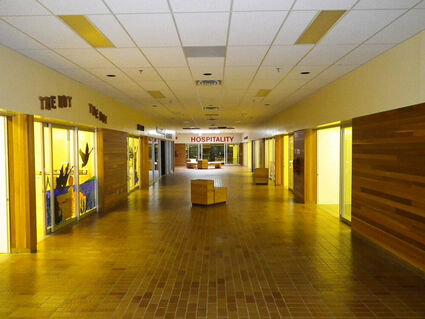
Sam Sebeskazal
This purportedly $250 million town is frozen in time. While caretakers maintain the area as it continues to try and be sold, today, it remains a true time capsule of the 1980s.
While a team would spend a season overwintered at the base between 1928 and 1929, the company would quickly sell the buildings to the Hudson's Bay Company in the fall of 1929, moving its aerial base to Baker Lake and other areas of the north.
As quick as it came, it was gone.
Further records suggest that the site at Tavani was in use until roughly 1951. Despite the short blip on the timeline map that it was, it is speculated to have been used as a fur trading location.
While not as exciting as the overnight cities built by corporations in the hopes of maximizing its capital or the chaotic randomness of settlements built by slipshod stampeders, Tavani is perhaps an example of possibly the most abundant type of ghost town – a building or two in the middle of nowhere.
Perhaps it isn't the abandonment of a large established town that makes it truly ghost-like, but the possibility of having your mark left on the world that is never even known in the first place, that is the real ghost.


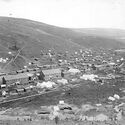
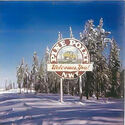
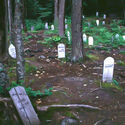
















Reader Comments(0)